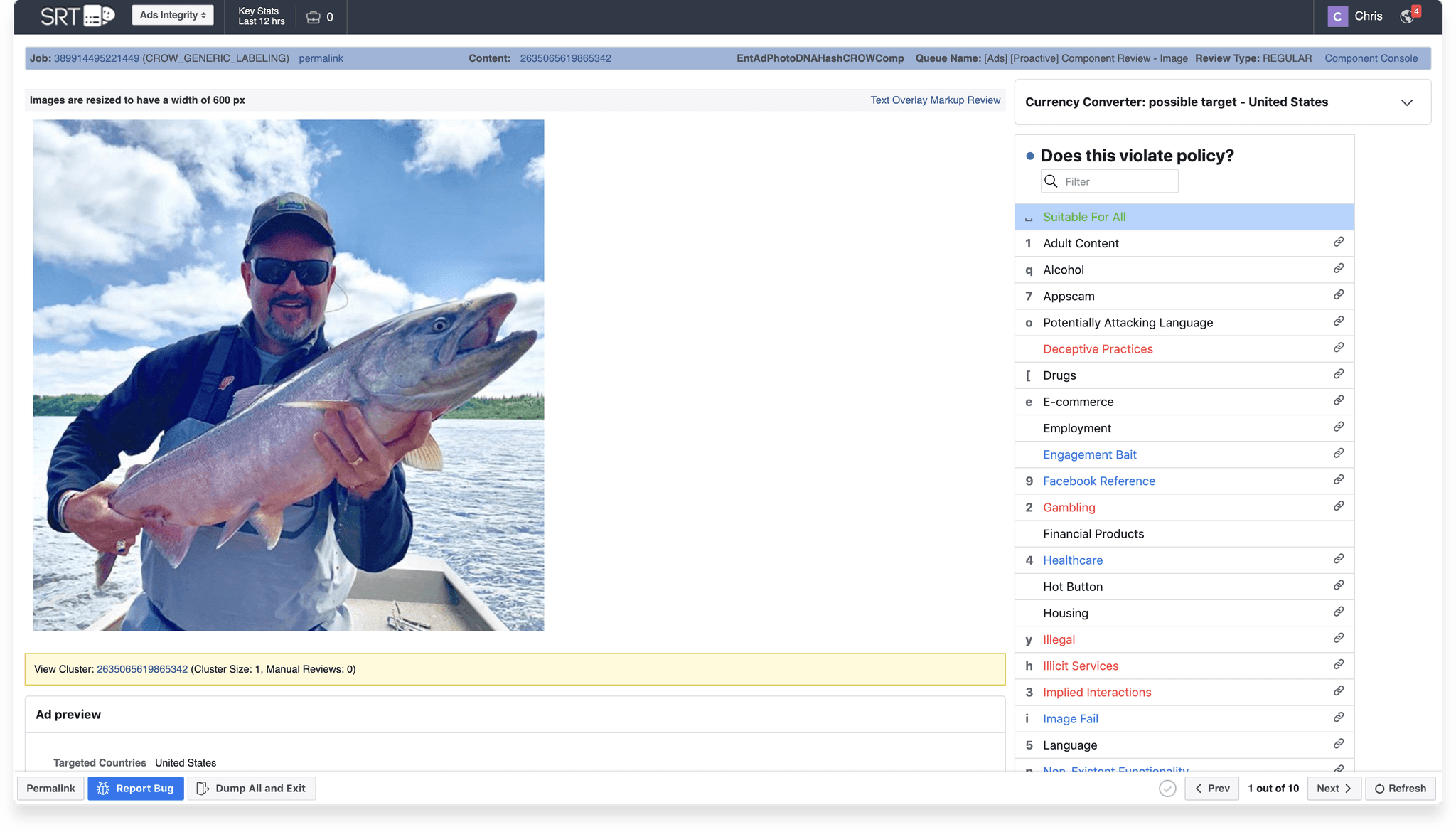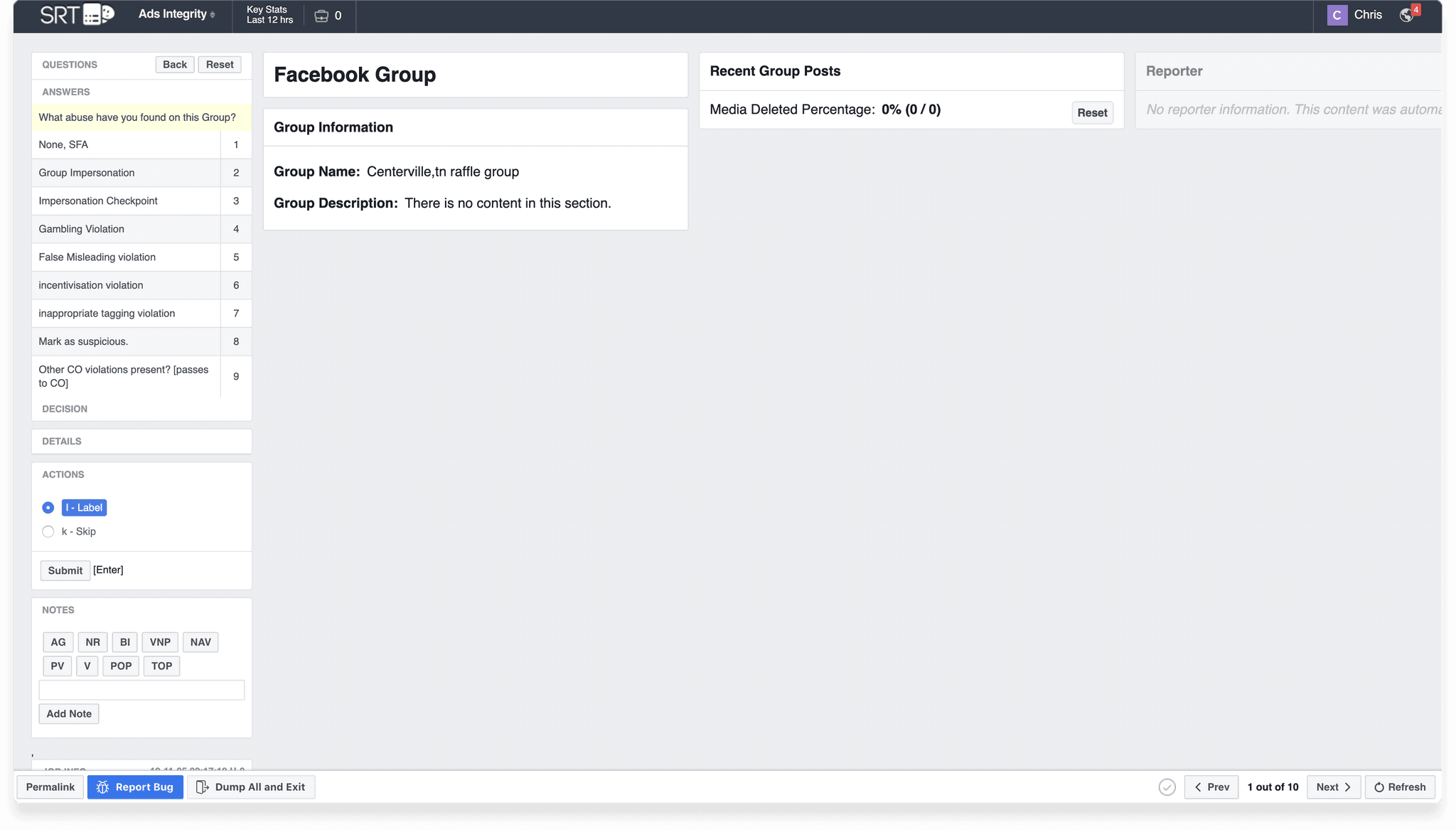
Redesigning Content Moderation
Facebook’s family of apps see billions of posts daily. A portion of these posts require manual human review to come to a decision. I helped design the product experience of human content review. This work required an intimate understanding a unique set of users, the philosophical and ethical stakes at play, and an immensely complex technical and operational decision-making system. I care deeply about this work and believe it is among the most important challenges Facebook faces.
How content is reviewed
When content is reported, it is first reviewed by automated systems. 80% of the time, these systems have enough confidence to decide whether or not the content is fit to remain on Facebook. The remaining 20% of the time there's enough uncertainty to pass the content on to a human reviewer.
Before
When I joined, Facebook's review tooling was in disrepair. It was built, scrappily, by engineers early in Facebook's history. As the platform grew, new review types and workflows were shoe-horned in. The product was unstable, built on outdated infrastructure, and lacked any underlying design system.


North Star Vision
Our challenge was to rebuild and redesign Facebook's review tooling without adversely impacting ongoing content moderation. To do this, we crafted a vision for a single, modular review interface. We then socialized that vision and collaborated with engineering to make a plan for its implementation. It started with a single review framework:
Modular Component Library
While the framework remained the same across all types of review, we built a modular library of components, each representing different pieces of information about all of the types of content that could be shared on Facebook's family of apps: images, text posts, ads, videos, livestreams, etc.
AI Assisted Review
Now that we established a design system, we were able to explore more tightly tying human decision-making with automated decision-making. Even if our automated system couldn’t make a definite decision on content, it had potentially valuable information that we were interested in surfacing to help their efficiency, accuracy, and wellbeing.
Graphic content Surfacing likely moments of graphic violence in videos
Obfuscating sensitive content Protecting reviewers from witnessing unnecessary sensitive content
Object and figure detection Identifying relevant cultural or political figures or objects
